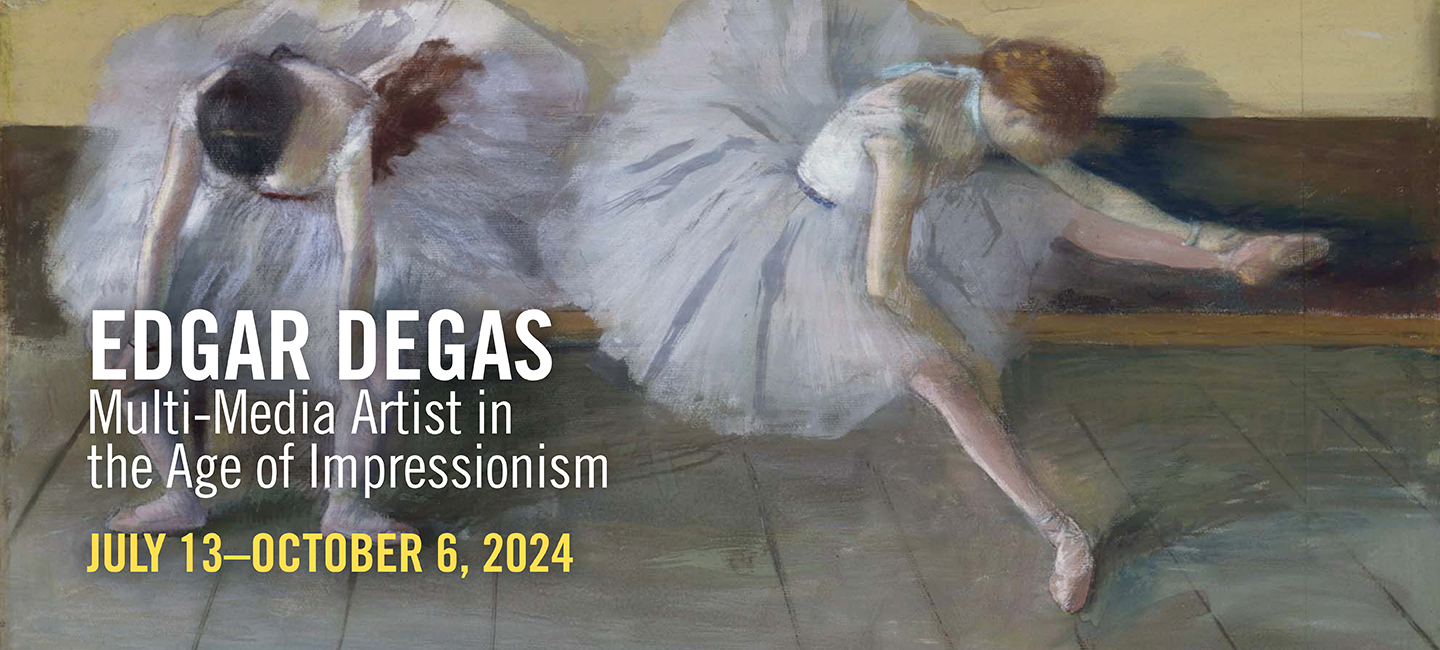FRIENDS AND ASSOCIATES
Degas played a vital role in shaping the rosters of the Impressionist Exhibitions and often invited artist-friends of his to participate. In turn, his innovations with artistic materials and techniques were often nourished by his friendships with other artists and printmakers, particularly those who shared his experimental bent.
Giuseppe de Nittis
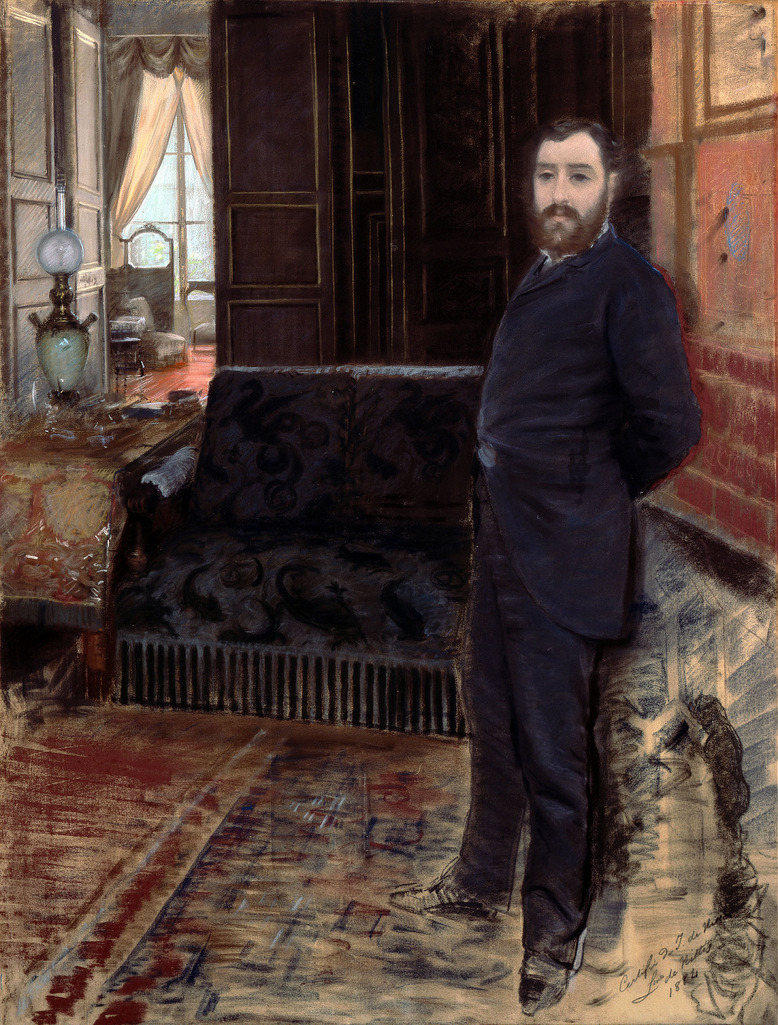 Giuseppe De Nittis (1846–1884), Self-portrait, 1884, pastel on canvas. Pinacoteca Giuseppe de Nittis. Image released through public domain via Wikipedia Commons.
Giuseppe De Nittis (1846–1884), Self-portrait, 1884, pastel on canvas. Pinacoteca Giuseppe de Nittis. Image released through public domain via Wikipedia Commons.The Italian artist Giuseppe de Nittis moved to Paris in the later 1860s and participated in the first Impressionist Exhibition in 1874, very likely at the invitation of Degas. Close to Marcellin Desboutin and Ludovic Lepic as well as Degas, de Nittis achieved success in London with etched views. Alongside Lepic, he pursued different inkings of his etched plates and, like Degas, began experimenting with monotype in the mid-1870s.
Marcellin Desboutin
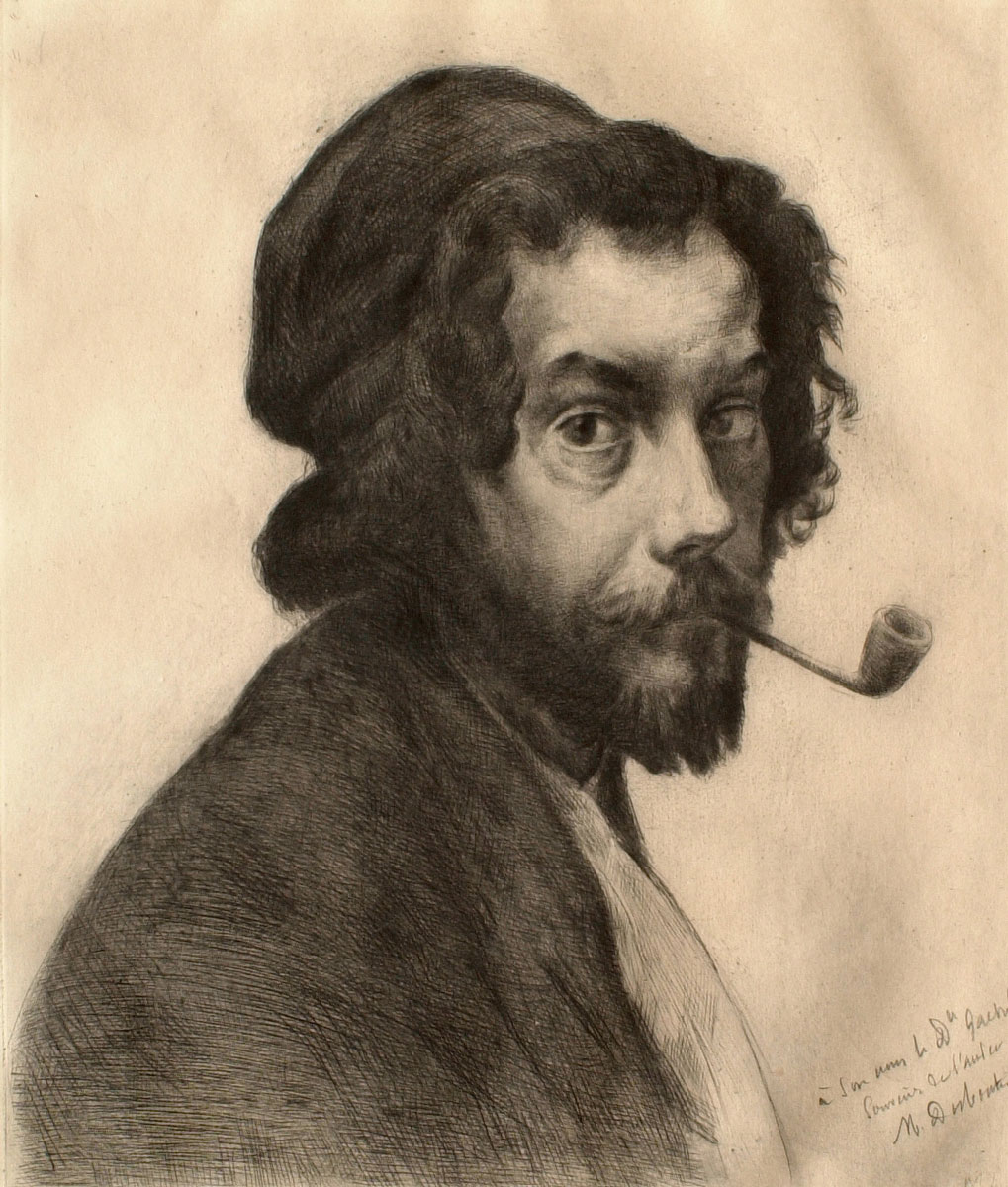 Marcellin Desboutin, Self Portrait, 1879, etching on paper. The Clark, 1970.2
Marcellin Desboutin, Self Portrait, 1879, etching on paper. The Clark, 1970.2In 1876, the writer, painter, and printmaker Marcellin Desboutin exhibited in the second Impressionist Exhibition, presumably at his friend Degas’s invitation. That same year, Desboutin wrote to their mutual friend Giuseppe de Nittis about Degas’s newfound obsession with monotype printing. Degas, Desboutin, and the accomplished and innovative printmaker Ludovic Lepic were linked by a strong shared commitment to printmaking.
Camille Pissarro
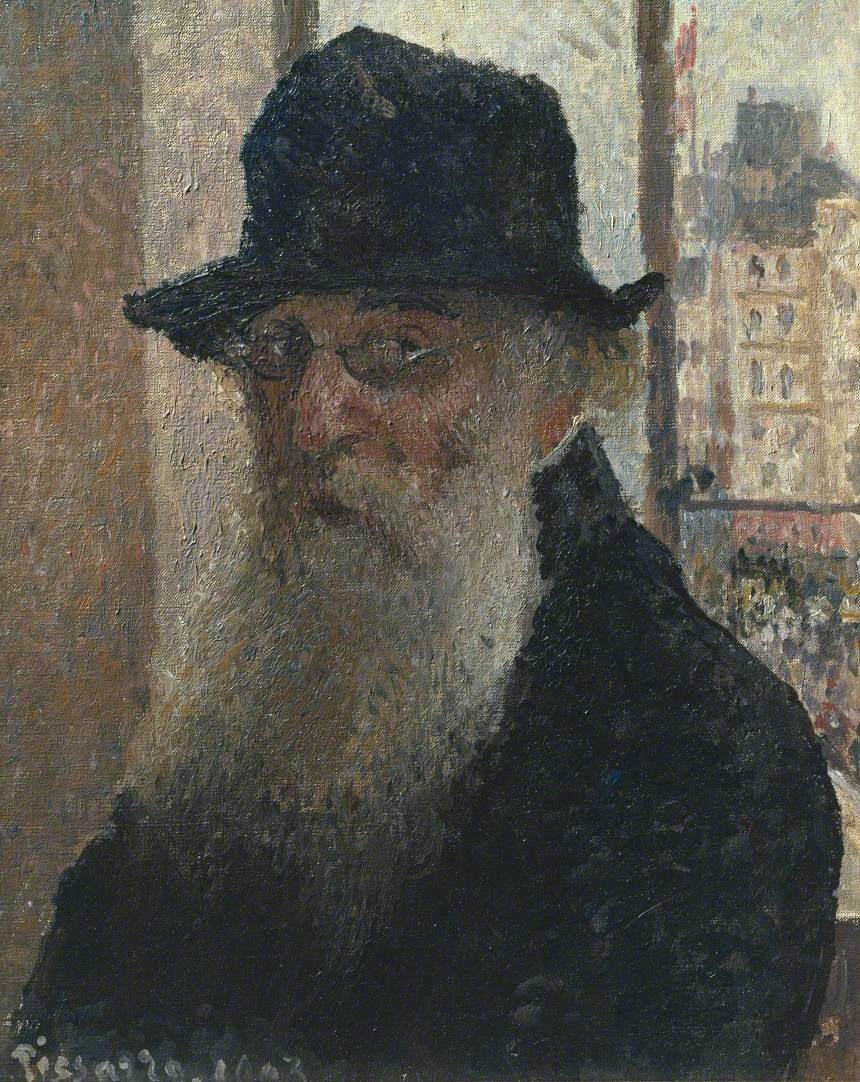 Camille Pissarro, Self-Portrait (Portrait de Camille Pissarro par lui-même), 1903, oil on canvas. The Tate, presented by Lucien Pissarro, the artist's son 1931, N04592. Image released under Creative Commons CC BY-NC-ND 4.0.
Camille Pissarro, Self-Portrait (Portrait de Camille Pissarro par lui-même), 1903, oil on canvas. The Tate, presented by Lucien Pissarro, the artist's son 1931, N04592. Image released under Creative Commons CC BY-NC-ND 4.0.Camille Pissarro shared Degas’s experimental approach to intaglio printmaking, and the two artists sometimes tested unorthodox tools and techniques side-by-side. Degas owned eight impressions of Pissarro’s work, Woman Emptying a Wheelbarrow, which has been called “perhaps the most technically complex of all Pissarro’s prints.” It was produced with an abrasive tool called an emery point, which Degas and Pissarro both used to scratch into copper plates and create gray tones in the resulting prints.
Henri Rouart
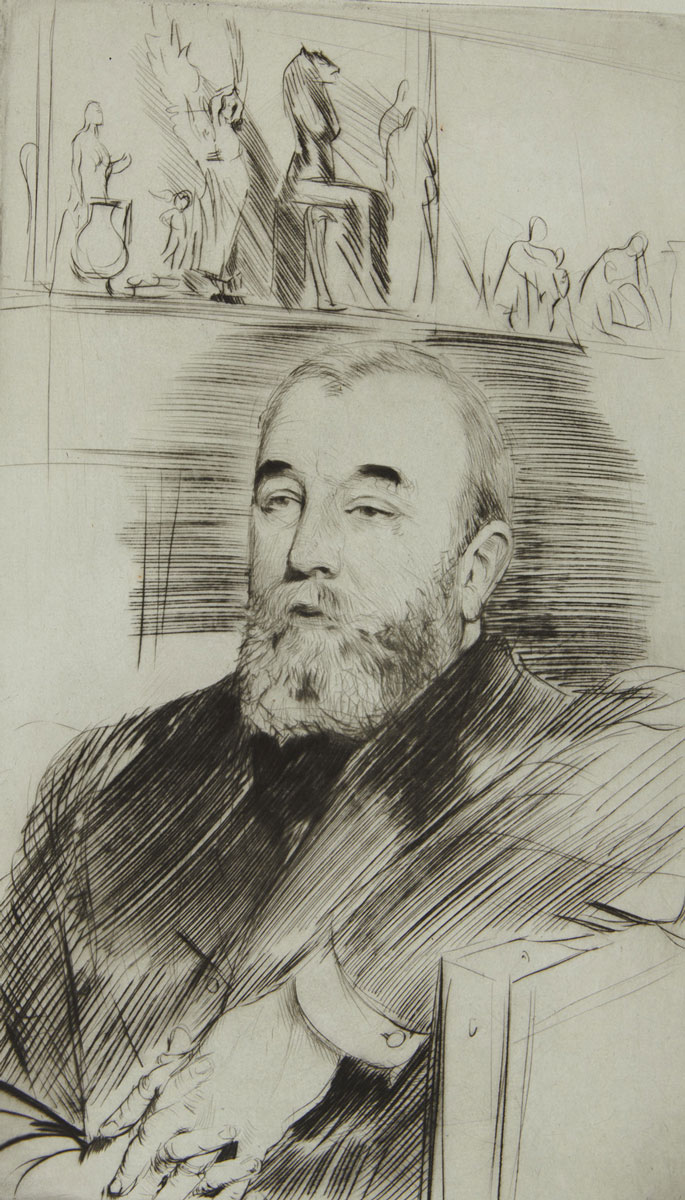 Paul César Helleu, Portrait of Henri Rouart, c. 1897, drypoint on blue-green laid paper. The Clark, acquired with funds donated by Jeffrey Shedd, 1990.4
Paul César Helleu, Portrait of Henri Rouart, c. 1897, drypoint on blue-green laid paper. The Clark, acquired with funds donated by Jeffrey Shedd, 1990.4One of Degas’s closest friends, Henri Rouart first met the artist when they were schoolmates. After Degas introduced him to the Impressionist group, Rouart exhibited in most of the Impressionist Exhibitions and helped to organize several of them. Apart from his activities as a painter, Rouart was a civil engineer at the head of a large metallurgical establishment in Paris. One of his inventions, a carbon rod used in the burgeoning industry of electric lighting, became significant as a printmaking tool for Degas.
Pierre-Georges Jeanniot
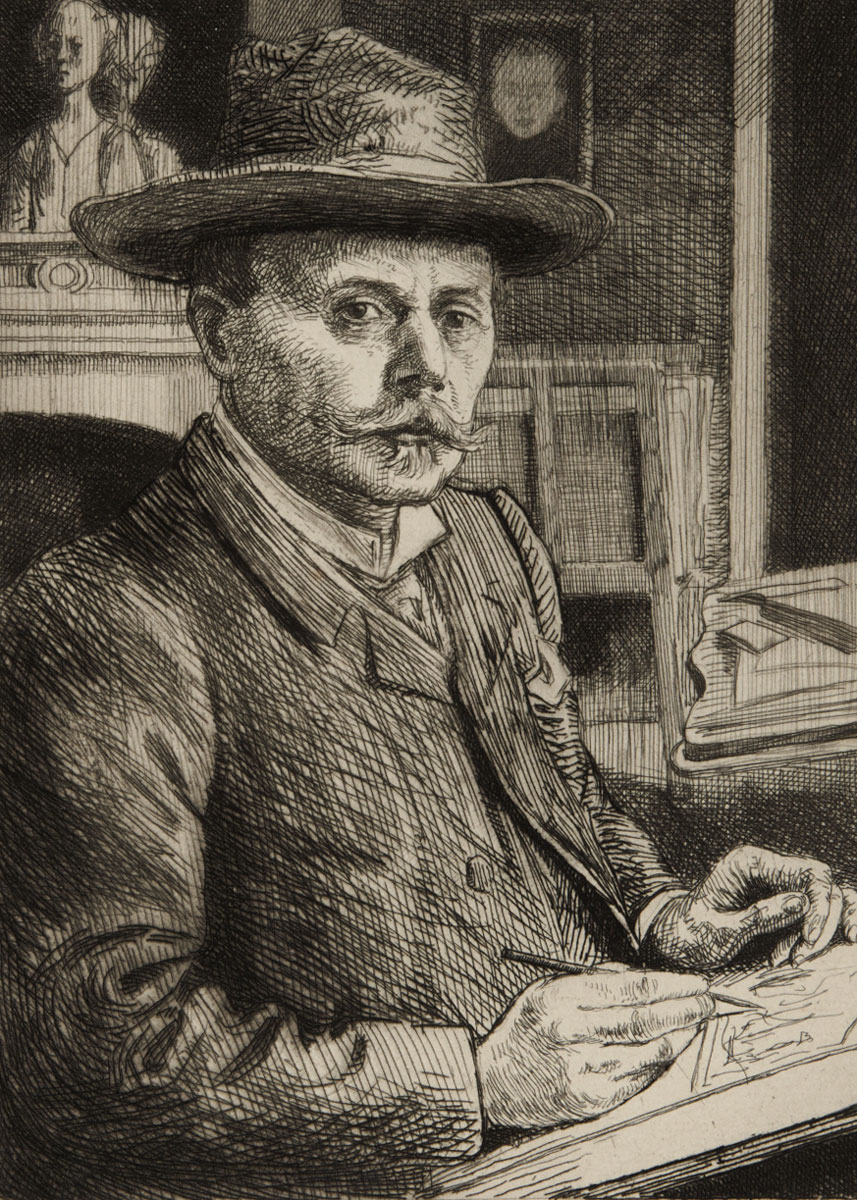 Pierre-Georges Jeanniot, Self-Portrait, c. 1900, drypoint on laid paper. The Clark, gift of James Bergquist, 1991.19
Pierre-Georges Jeanniot, Self-Portrait, c. 1900, drypoint on laid paper. The Clark, gift of James Bergquist, 1991.19Pierre-Georges Jeanniot was a close friend of Degas. In 1890, on one of his frequent visits to Degas’s Paris studio, Jeanniot came upon a new form of his picture-making: oil-paint monotypes. During a visit to Jeanniot in Burgundy (a region in east-central France), Degas produced a group of remarkable monotype landscapes, an example of which can be seen in the exhibition. In Jeanniot’s essay Souvenirs sur Degas (Memories of Degas), he gave a detailed account of these monotypes and confessed to keeping the rag Degas had used to make them, as a personal memento.
